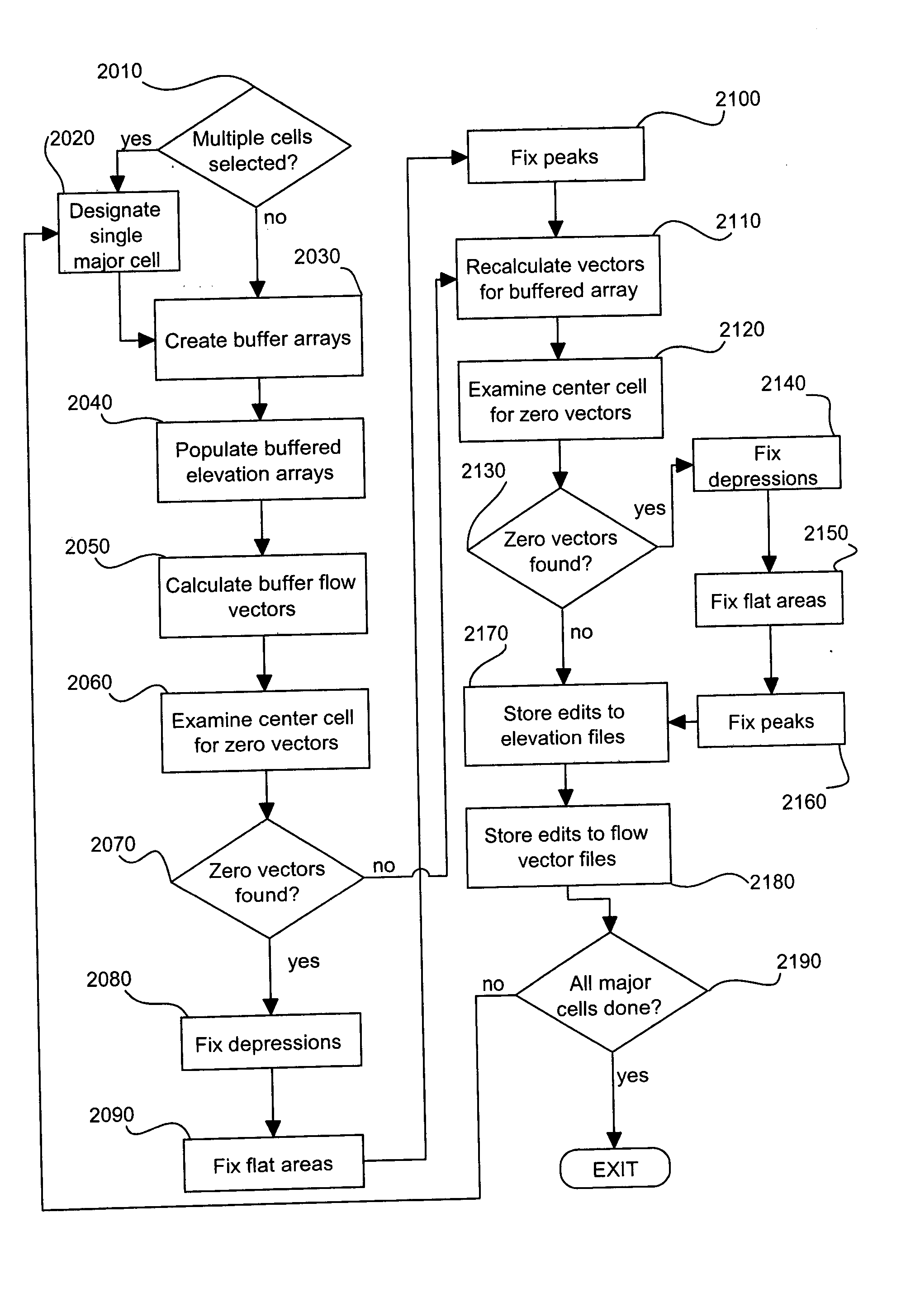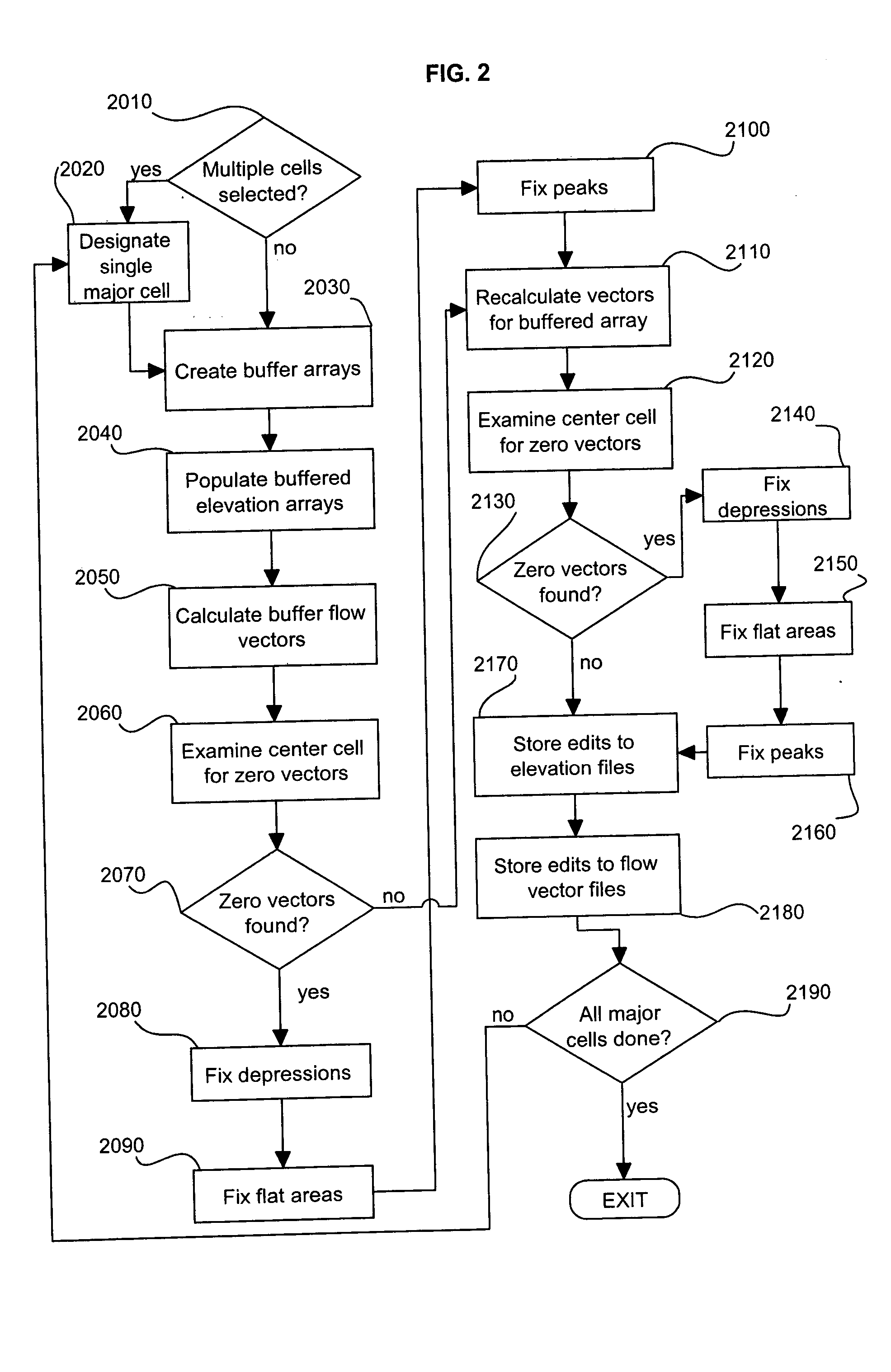Method for flow analysis utilizing cell elevation topology
a flow analysis and topology technology, applied in the field of flow analysis utilizing cell elevation topology, can solve the problems of difficult to determine the route of water or liquid flow out of these areas, the model may be imprecise, and the tools used in the past are not optimized for working with the larger volume of new data
- Summary
- Abstract
- Description
- Claims
- Application Information
AI Technical Summary
Benefits of technology
Problems solved by technology
Method used
Image
Examples
Embodiment Construction
[0035] The method of this invention uses data derived from geological Digital Elevation Models (DEM's) to generate flow vectors based on a flow analysis utilizing cell elevation topology and is hereinafter referred to as FAUCET. The method derives input data from Digital Terrain Model data (DTM) that has been used to produce Triangular Irregular Network models (TIN's) for floodplain mapping and grid-based Digital Elevation Models (DEM's) for delineating basins and generating streamlines.
[0036]FIG. 1 displays a general overview of a hydrological modeling process in which the method of this invention may be used. At 1010, one or more sources of terrain data is selected to provide a basis from which flow vectors will eventually be calculated, as needed. At 1020, the user creates an index shapefile containing numerous index cells that represent the DEM data being processed. An index cell is one that is uniform in size and conforms to the extents of the DEM data source. Such index cells...
PUM
 Login to View More
Login to View More Abstract
Description
Claims
Application Information
 Login to View More
Login to View More - R&D
- Intellectual Property
- Life Sciences
- Materials
- Tech Scout
- Unparalleled Data Quality
- Higher Quality Content
- 60% Fewer Hallucinations
Browse by: Latest US Patents, China's latest patents, Technical Efficacy Thesaurus, Application Domain, Technology Topic, Popular Technical Reports.
© 2025 PatSnap. All rights reserved.Legal|Privacy policy|Modern Slavery Act Transparency Statement|Sitemap|About US| Contact US: help@patsnap.com



